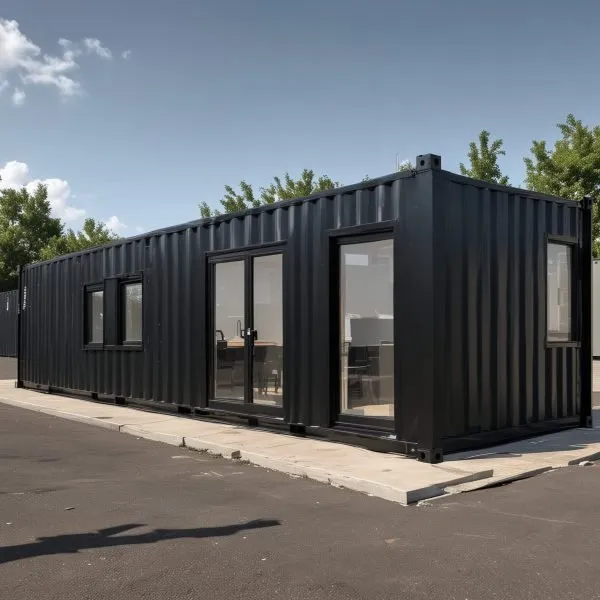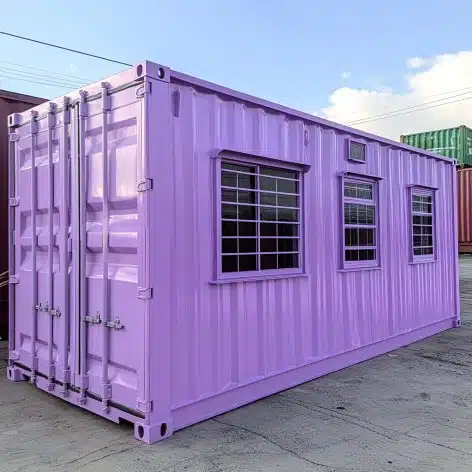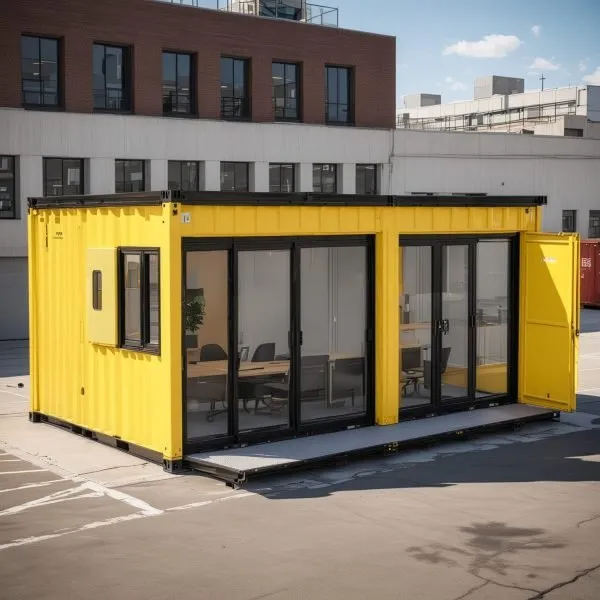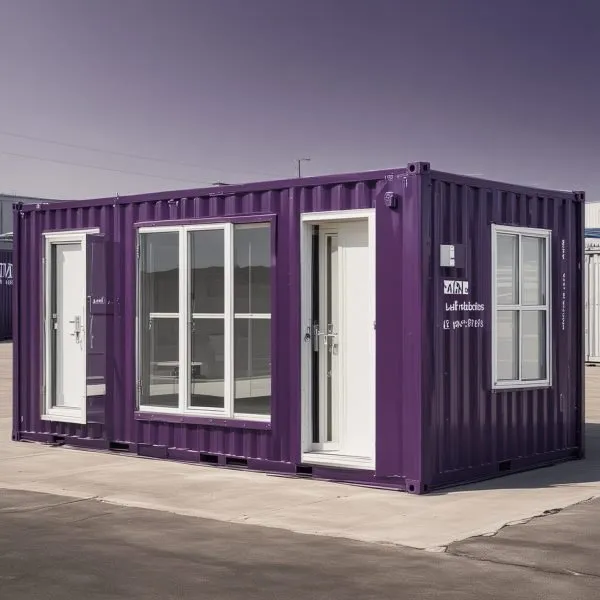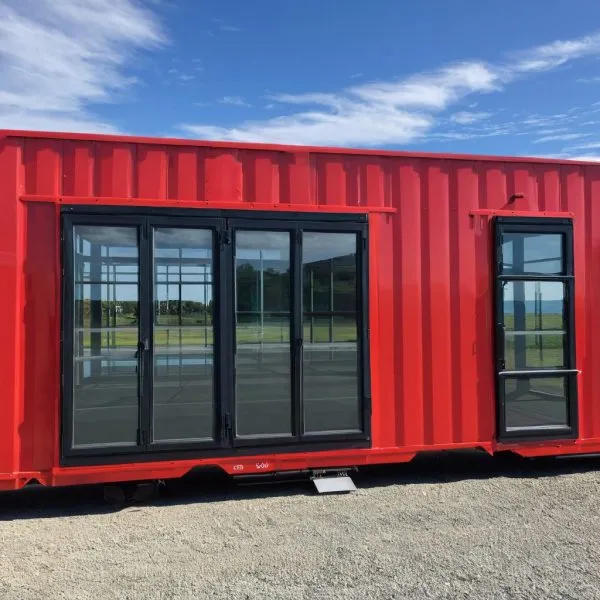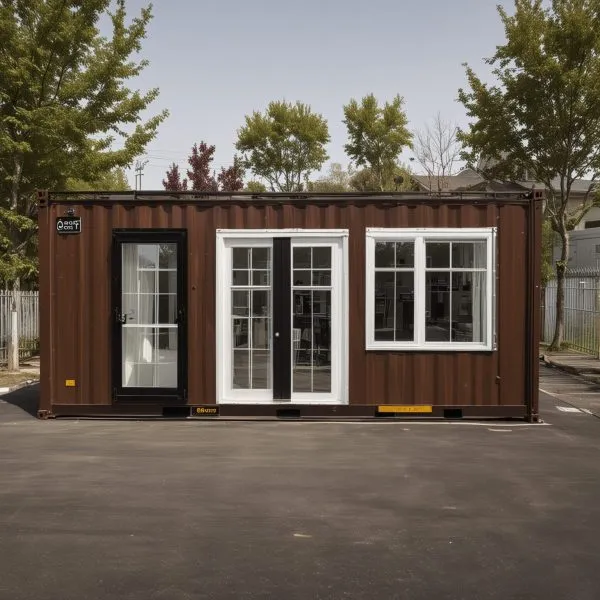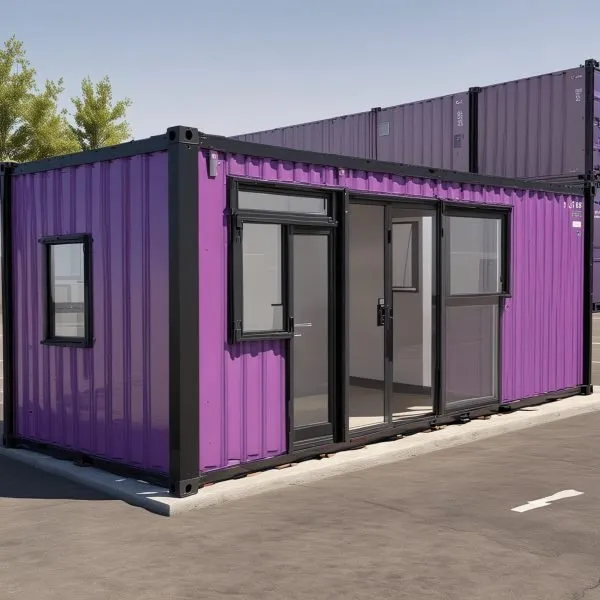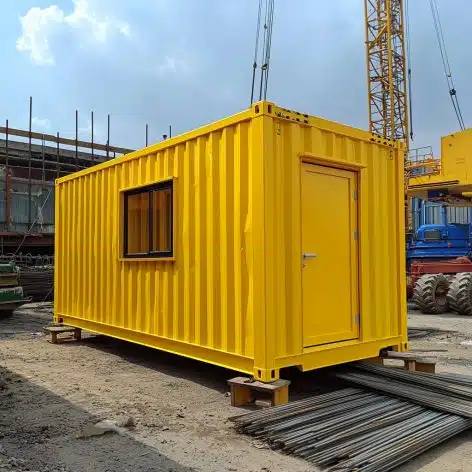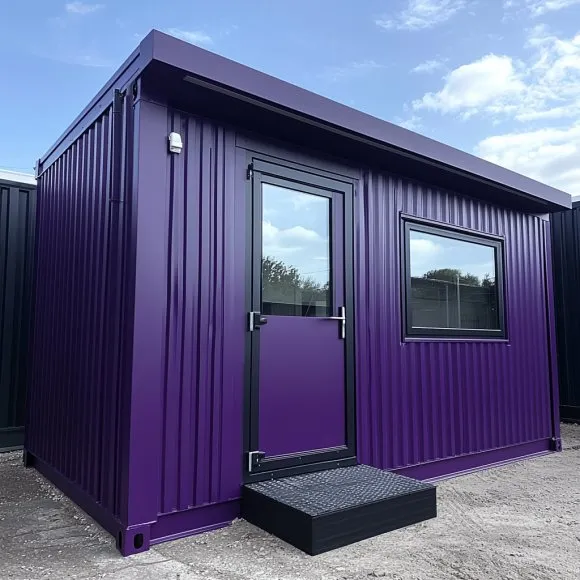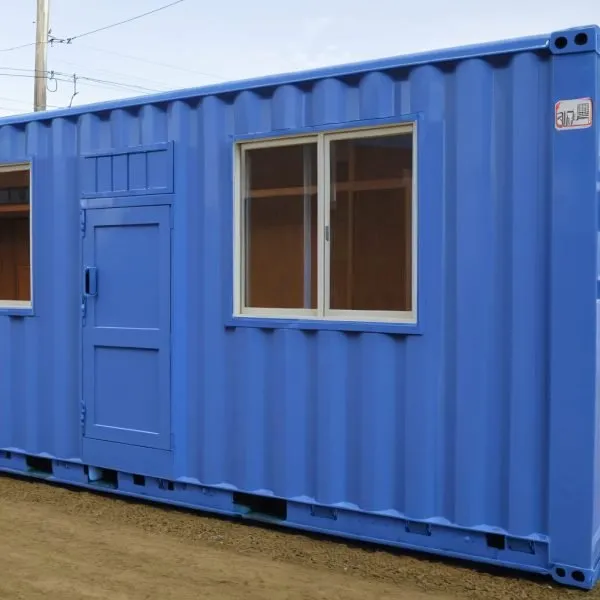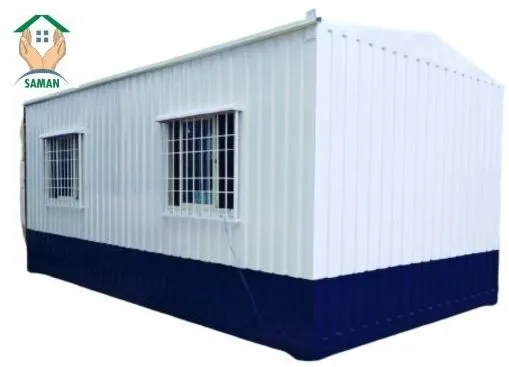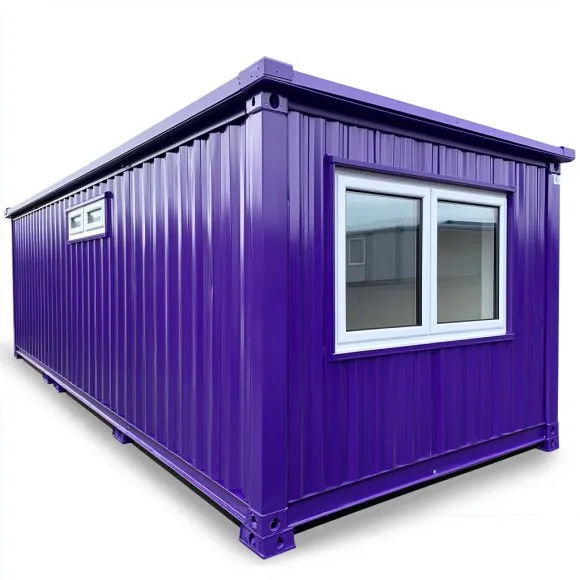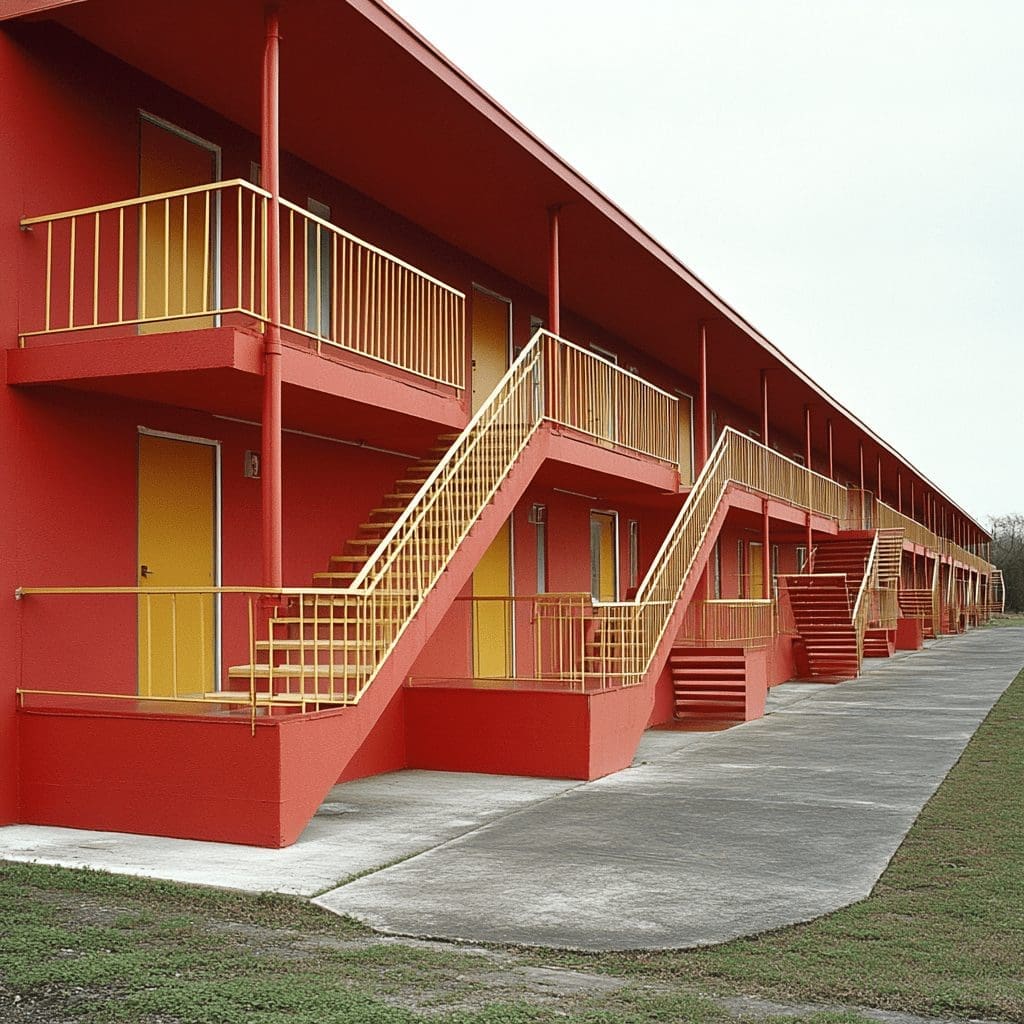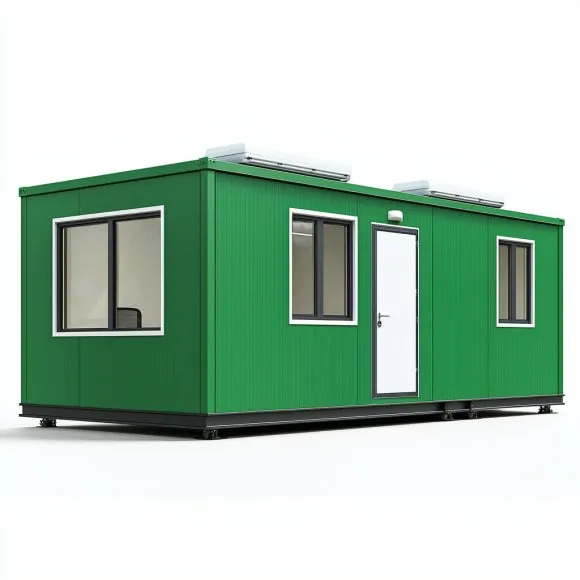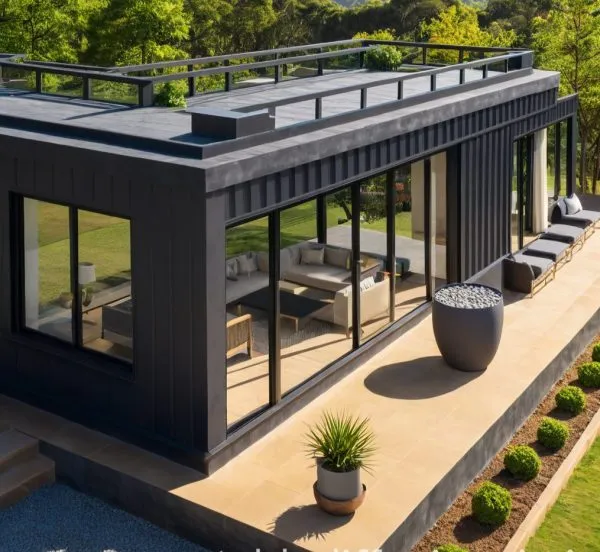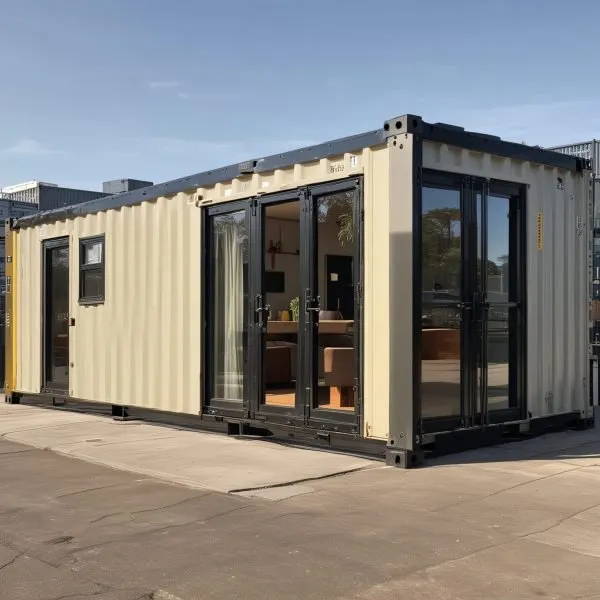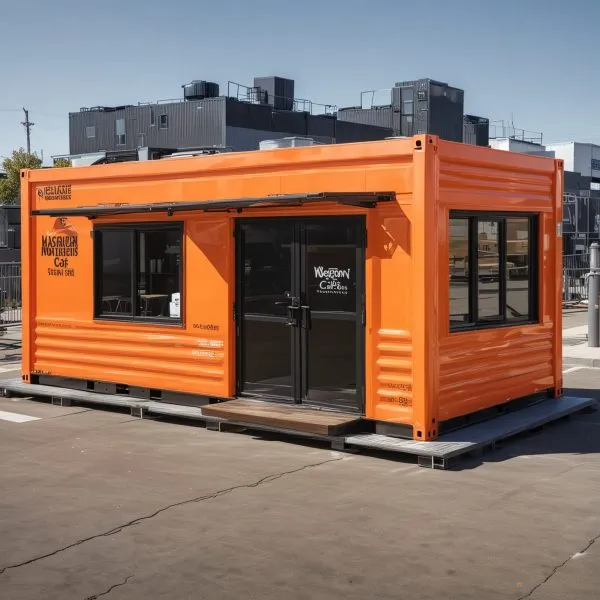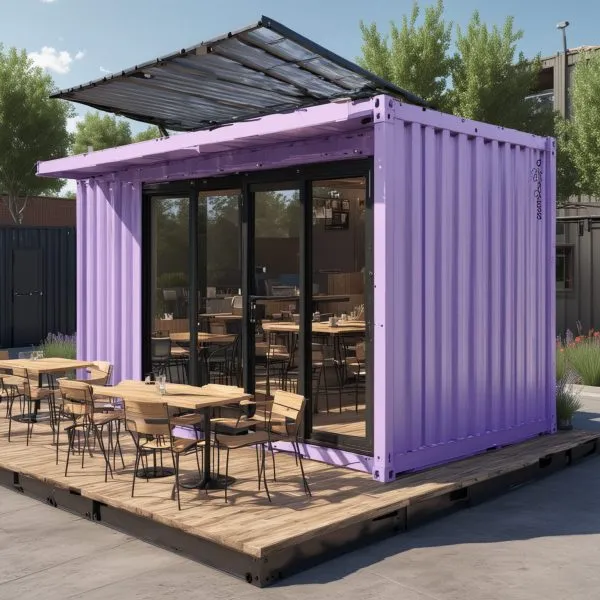Dimensions of Portable Cabins Decoded: The Complete Size Guide to Fit Your Needs Perfectly

In India’s fast-changing construction world, prefabricated structures are making a big impact. They are eco-friendly, durable, and flexible for many uses. Portable cabins are especially popular for businesses, homes, and building projects. But, have you thought about the details of these structures? How do you pick the right size for your needs?
Let’s explore the dimensions of portable cabins and find the perfect match for you.
Key Takeaways
- Portable cabins come in a range of sizes and dimensions to cater to various applications
- Understanding the standard dimensions and customization options is crucial for selecting the right portable cabin
- Factors like length, width, height, and weight specifications play a vital role in choosing the optimal portable cabin size
- Portable cabins offer exceptional flexibility, allowing for easy relocation and site-specific adaptations
- Saman Portable Cabin series is a leading provider of customizable, high-quality portable cabins in India
Understanding Portable Cabin Basics and Their Significance
Portable cabins are versatile structures that offer a unique solution for a wide range of applications. They are becoming increasingly popular. This is because they can serve as temporary offices, storage units, or even comfortable living quarters. Their portability makes them easy to move without needing extensive foundation work.
What Makes Portable Cabins Popular
Portable cabins are popular for several reasons. They are customizable, durable, and cost-effective. You can add amenities like air conditioning and insulation to meet your needs. They are made from high-grade steel, offering security and durability, especially in remote areas.
Key Components of Portable Structures
The core of portable cabins includes a sturdy steel frame, durable exterior cladding, and high-performance insulation. These elements create a secure and comfortable space. They protect occupants from the elements and help regulate temperature efficiently. The modular design allows for quick installation, saving time and resources.
Benefits of Modular Construction
The modular design of portable cabins has many advantages. They are prefabricated in controlled factory settings, ensuring quality and customization. This method streamlines the building process. It also guarantees precision and attention to detail, making the structures durable and visually appealing.

Standard Dimensions of Portable Cabins in the Indian Market
In India, portable cabin sizes change based on who makes them and what they’re for. They range from small for one person to big for many rooms or offices. SAMAN Porta Cabins series has many sizes for homes and businesses. These cabins are made to be moved and set up easily in different places.
Over 1,000 portable cabin products are listed on IndiaMART. They include Office Containers, Mobile Containers, and Portable Security Cabins. Prices vary a lot, with some like PVC Portable Toilets costing between ₹7,00,000 and ₹25,000.
The sizes of portable cabins in India vary:
- 3′ x 3′
- 10 x 20 x 8 inches
- 20 feet in length
- 3.5 x 3.5 x 7 feet
These cabins are made from materials like MS, PVC, FRP, Mild Steel, and Cement. They are used for many things, like offices, homes, guard rooms, and even hospitals.

Portable cabins in India are good for the environment, easy to put together, and can be air-conditioned. They come in many designs, like rectangular and steel panel.
Dimensions of Portable Cabins: A Comprehensive Overview
Dimensions are key for portable cabins. They fit well in small spaces or as off-grid living quarters. These cabins usually match standard shipping container sizes for easy transport and flexibility.
Length Specifications
Portable cabins come in 10, 20, and 40 feet lengths. The 10-foot model is great for tight spots. The 20 and 40-foot cabins offer more room for different needs.
Width Variations
Most portable cabins are about 8 feet wide. This size fits well with transport and site needs. It also makes the most of available space without being too big.
Height Considerations
The height of these cabins is between 8 to 9.5 feet. This height is perfect for various activities and functions. It balances ease of access, storage, and strength.
While these sizes are common, they can be adjusted to fit specific needs. Some makers offer modular designs for bigger spaces. The right size depends on the use, site, and transport needs.

Small-Size Portable Cabin Specifications
Small-size portable cabins are great for individual workspaces or cozy living areas. They are usually 8 to 12 feet long and 6 to 8 feet wide. These cabins are easy to move and set up, perfect for remote or temporary needs.
These cabins use space well with smart layouts and storage. They have multi-functional furniture to save space. They are great for many uses, like temporary offices or guest houses.
- Size: 20’x 10’x 8’6″
- Flooring thickness: 1.8mm Vinyl Flooring
- Hook & Legs: 4 hooks on top and 4 legs of 8″ each provided
- Standard Sizes available: 4×4, 8×10, 10×20, 10×40 Feet
- Minimum Order Quantity: 1

Small-size portable cabins are designed to be efficient and easy to move. They are a cost-effective solution for many needs, from temporary workspaces to compact living spaces.
Medium-Size Cabin Measurements and Applications
Medium-size portable cabins are very versatile. They are usually 15 to 25 feet long and 8 to 10 feet wide. This makes them great for many uses. Knowing the size guide and dimensions is key to finding the right cabin for you.
Optimal Uses for Medium Cabins
Medium cabins work well as site offices, temporary classrooms, or even small homes. They have enough room for important things but are still small. They’re perfect for construction sites, remote places, or where a big building isn’t possible.
Space Planning Guidelines
- Medium cabins have areas for work and rest, making them functional and comfy.
- They often come with basic things like kitchenettes and bathrooms, making them more useful.
- It’s important to plan the space well in medium cabins. This means using the space wisely and keeping it open and comfy.
By thinking about the size of portable cabins and following space planning tips, businesses can find the right medium-size cabin. This ensures a productive and cozy space for everyone.

Large Format Portable Cabin Dimensions
Large format portable cabins really stand out when it comes to size. They are longer than 30 feet, sometimes up to 40 or 50 feet. These big units are great for bigger needs like multi-room offices, large living areas, or special facilities.
These cabins can have more rooms and bigger features. They have full-sized amenities and better storage. This makes them a top pick for businesses and people who need a lot of space.
But, these big cabins need special care when moving and setting up. They can be hard to move and place correctly. You’ll need to plan well and work with experts to set them up right.
We have many portable cabin sizes to choose from, including the big ones. If you need a big office, a multi-room home, or a special place, we can help. Our team will find the right cabin for you.

Get in touch with our experts for advice on portable cabin measurements that fit your needs. We aim to give you reliable and strong solutions. These will help you work better and enjoy your space more.
Custom Size Options and Flexibility in Design
In the world of compact living spaces and tiny home footprints, the demand for customizable portable cabins has never been higher. Many manufacturers now offer a range of custom size options to meet the unique needs of their clients. This flexibility allows for tailored solutions that can seamlessly fit specific site requirements or specialized functions.
Customization Possibilities
From adjustable room layouts to specialized interior fittings and exterior modifications, the possibilities for customization are vast. Portable cabin designs can be adapted to incorporate modular components that can be easily added or removed. This allows the structure to evolve with changing needs over time.
This adaptability ensures that the cabin remains a versatile and efficient solution, regardless of the user’s requirements.
Design Adaptability Features
- Modular construction for flexible floor plans
- Customizable interior finishes and fittings
- Exterior design elements that can be modified
- Integrated technology and smart home features
- Eco-friendly materials and energy-efficient systems
By embracing the concept of customization, portable cabin manufacturers are empowering their clients to create living and working spaces that truly reflect their unique needs and preferences. This level of design adaptability is a key driver in the growing popularity of these compact and versatile structures.

Transportation Considerations Based on Cabin Size
Portable cabins are getting more popular for many uses, like temporary homes or offices. But moving these structures is a big deal. The size of the cabin really matters for getting it to its new home.
Most portable cabins are made to fit on the road, usually no wider than 8.5 feet. This makes them easy and cheap to get to where they need to go. But bigger cabins might need special permits or be put together on-site because they’re too big to move.
- Size and weight limits: Cabins have to be the right size and weight to move safely and legally. Big or heavy cabins need special gear and care, making things more complicated.
- Following the rules: It’s key to know all the rules for moving big loads, getting permits, and keeping things safe. Knowing these rules well helps get the cabin delivered without a hitch.
- Going international: With the world market growing, moving cabins across borders is now possible. But, there are more things to think about, like customs, rules in other countries, and the right papers.
- Getting to hard-to-reach places: Cabins often go to places that are hard to get to. So, it’s important to have a good way to get them there.
Thinking about the size of portable cabins and how to move them is key. It helps project managers and those in charge of moving things to get the job done right. This makes the whole project a success.
Interior Space Planning and Optimization
Planning the interior of portable cabins is key, especially in small spaces. To make the most of the area, use furniture that does more than one thing. Also, add built-in storage and use the walls for shelves.
In tiny cabins, think about fold-down beds or desks. These can open up a lot of floor space.
Efficient Layout Strategies
In bigger cabins, setting up different areas for activities is smart. Use smart storage like under-bed spots, wall shelves, and custom cabinets. This keeps things tidy and organized.
Storage Solutions
- Use furniture that does more than one thing to save space
- Install built-in storage like under-bed spots and wall shelves
- Make the most of vertical space with custom cabinets and shelves
- Think about fold-down beds or desks in small cabins
- Set up different zones for activities in larger cabins
By using these smart layout and storage ideas, portable cabins can be cozy and organized. This is true even in tight spaces.
Weight Specifications Across Different Dimensions
Portable cabins’ weight is key for moving, setting up, and if they can be used. They come in sizes from 10 feet to 30 feet. Each size has its own weight.
Smaller cabins, 10 to 15 feet, weigh 1,000 to 3,000 kilograms. These are light and easy to move. They are great for places where moving and setting up is easy.
As cabins get bigger, they can weigh over 5,000 kilograms. These bigger ones, 20 to 30 feet, have more space and features. Their weight affects how they are moved and set up.
The weight of a cabin is very important. It affects how easy it is to use these structures. Knowing the weight helps professionals plan better. This ensures these portable solutions work well in projects.
Site Requirements for Various Cabin Sizes
Portable cabins need different site requirements based on their size and use. Knowing these specs is key for a smooth installation and best performance.
Foundation Specifications
The foundation needs for portable cabins change with size and purpose. Small cabins, like security guard cabins for ₹70,000, might just need a flat, compacted area. But bigger cabins, costing about ₹1.85 Lakh, might need concrete pads or piers for stability.
Access Requirements
The portable cabin size guide highlights the need for good access. The area should be at least 12 feet wide, 15 feet high, and 40 feet long. This space is needed for the cabin and the tools for setting it up.
A 16 x 8 x 10 feet porta cabin needs a space that’s 12 feet wide, 15 feet high, and 40 feet long. This ensures easy movement and correct placement.
Understanding the site needs for different portable cabin size guide helps in a smooth and efficient setup. It meets specific needs and space limits.
Cost Implications of Different Cabin Dimensions
The cost of portable cabins depends on their size and how customized they are. Smaller cabins are cheaper, with prices going up for bigger ones and more features. The cost also depends on the materials, interior, and any extra equipment.
Larger cabin sizes cost more upfront but might be worth it for more space and function. Basic porta cabins start at around ₹50,000. They can be used for storage or a small office.
The price for porta cabins varies a lot, from ₹45,000 to ₹220,000. This depends on the size and features. Custom office cabins can get very expensive, with high-quality finishes and tech.
Portable cabins are cheaper than regular buildings because they’re made in a factory. This saves on materials and labor. They also get built faster, saving money on construction costs.
Buying more than one cabin unit can make it cheaper. This is because of bulk discounts and lower shipping costs in the porta cabin market.
Building Codes and Size Regulations in India
Understanding building codes and size regulations in India is key for compact living spaces and tiny homes. These rules change based on where you are and what you plan to use the space for. Portable cabins must follow local laws and building rules. Some places might limit how big these structures can be or need permits for certain sizes.
It’s important to talk to local authorities and follow national safety and building standards for portable cabins. The SAMAN Portable Office Solutions notes that the Draft Model Building Bye-laws of 2016 were reviewed by 110 people. They made comments on high-rise buildings, accessibility, sustainability, parking, and fire safety.
The Model Building Bye-laws of 2016 cover safety, security, and environmental concerns. They also talk about modern construction, the Swachh Bharat mission, and ease of business. This document helps states and local bodies update their building rules.
After the Bhuj Earthquake in 2001, 22 states and union territories updated their building bye-laws. This ensures portable cabins meet the latest safety and building standards. Whether for compact living spaces or tiny home footprints, they are built to comply with current regulations.
Conclusion
Portable cabins are becoming key in India’s fast-changing construction and housing scenes. They offer a flexible and efficient way to meet various space needs. Whether for personal use, temporary offices, or full facilities, there’s a perfect portable cabin for everyone.
These cabins come in all sizes, from tiny micro-dwellings to big ones. Their customizable nature means they fit many different needs. As technology improves, we can expect even more options for portable cabins, meeting the growing demand for modular housing.
In summary, portable cabins are a smart choice for many reasons. They’re affordable, weather-proof, and easy to set up. This makes them a great option for a wide range of projects in India.
FAQ
What are the common dimensions of portable cabins in the Indian market?
In India, portable cabins come in various sizes. The smallest are 8-12 feet long and 6-8 feet wide. The largest can be over 30 feet long. Medium cabins are 15-25 feet long and 8-10 feet wide. They are usually 8 to 9.5 feet tall.
How do the dimensions of portable cabins impact their applications and uses?
Small cabins are great for personal workspaces or tiny homes. Medium cabins can be used as offices, classrooms, or small homes. The biggest cabins are for large offices, homes, or special needs spaces.
What are the considerations for transporting portable cabins of different sizes?
Moving portable cabins is important. Standard sizes fit on highways easily, not over 8.5 feet wide. Bigger ones might need special permits or be built on-site.
How does the size of a portable cabin impact the interior space planning and optimization?
Planning the inside of a portable cabin is key. Use furniture that does more than one thing, and add storage. In small cabins, fold-down beds and desks save space. Big cabins can have different areas for different activities.
What are the weight specifications for portable cabins of varying dimensions?
The weight of a portable cabin depends on its size and materials. Small ones weigh 1,000 to 3,000 kg. Big ones can be over 5,000 kg. Weight affects how it’s moved and prepared for site use.
How do building codes and size regulations in India impact the use of portable cabins?
Building rules for portable cabins in India change by area and use. They must follow local laws and building rules. Some places limit the size of portable buildings or need permits for larger ones.
 Container Cafe
Container Cafe

